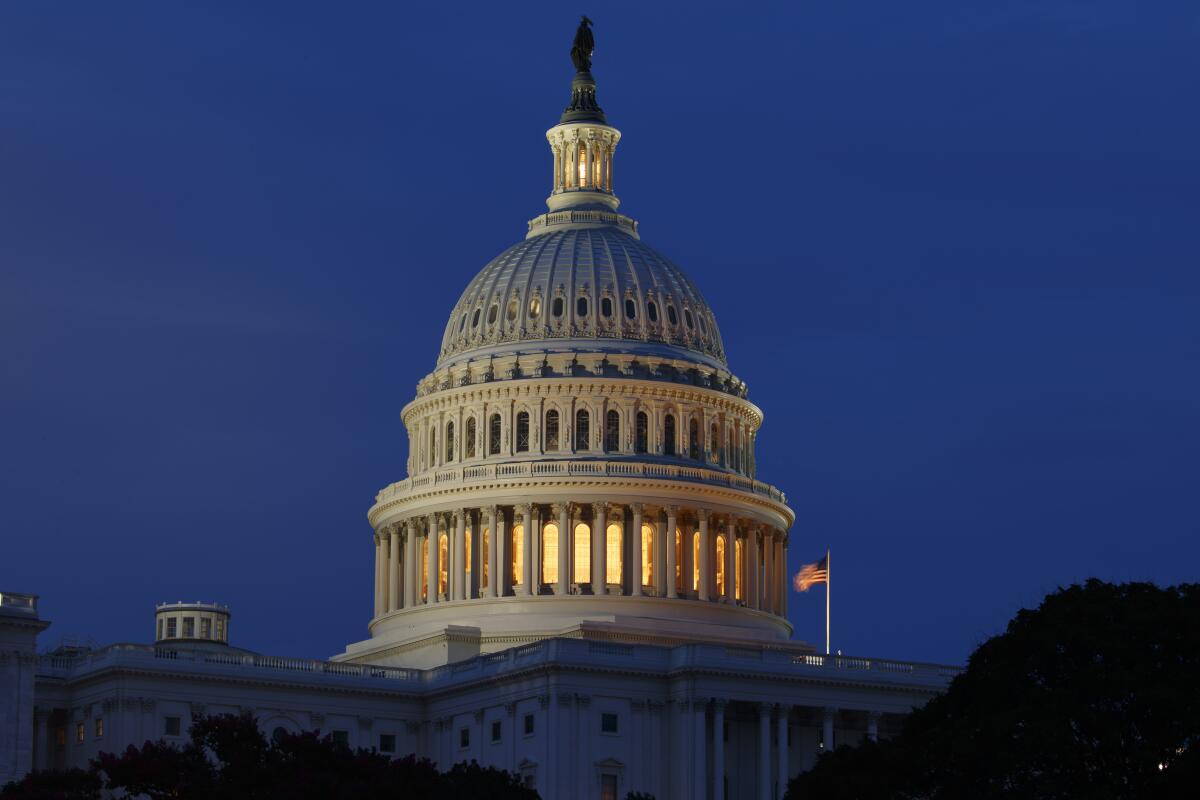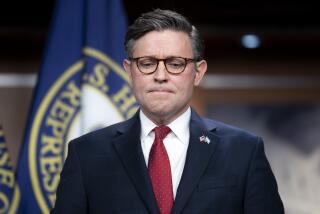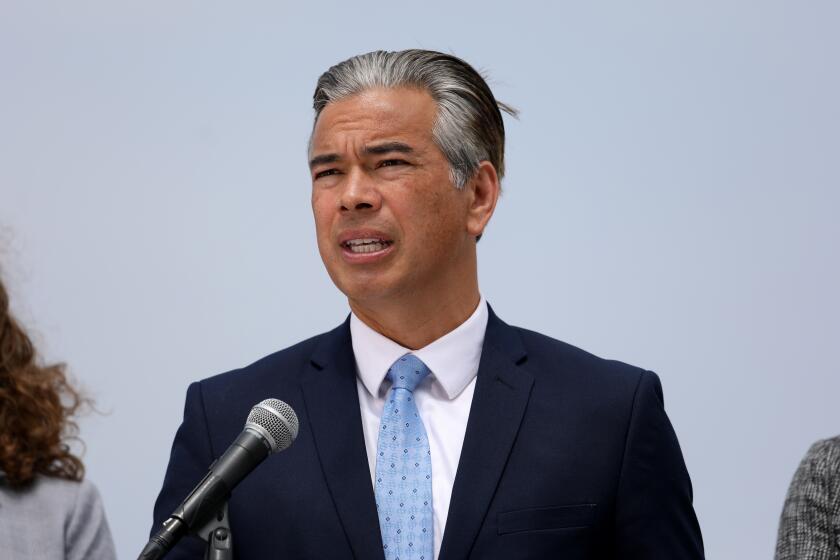U.S. budget deficit to top $1 trillion in 2020, two years sooner than expected

- Share via
The U.S. budget deficit is growing faster than expected, and President Trump’s trade war is weighing on the economy, according to a new Congressional Budget Office forecast that highlights key challenges as the 2020 elections approach.
The shortfall is set to widen to $1 trillion by fiscal year 2020, two years earlier than previously estimated, according to the nonpartisan group’s annual budget outlook, released Wednesday. That’s up from an estimated $960 billion in the year that ends Sept. 30. In January, the CBO predicted a gap of $890 billion next year and didn’t expect it to top $1 trillion until 2022.
Widening the nation’s budget gap is legislation that raised spending levels, though the effect will be somewhat moderated by the expectation of lower interest rates, which reduces the government’s debt-service burden. Trump has badgered the Federal Reserve to cut its policy rate, and market rates are low too.
It would be the first time the deficit exceeded the $1-trillion mark since 2012, as the economy was recovering from the financial crisis. That could give Democrats ammunition as Trump runs for reelection. Fiscal hawks say the rising wave of red ink also limits the federal government’s ability to provide stimulus in the event of an economic downturn.
The CBO’s report rebuts a claim by White House economic advisor Larry Kudlow that the deficit is “coming down, and it’s coming down rapidly.” Kudlow made the comments a year ago, and he has stuck to that message. Last month he said the deficit was “quite manageable” and not “a huge problem.”
He may have a point when the projected deficits are measured as a share of the economy. According to the CBO’s numbers, the deficit will be 4.6% of gross domestic product and stay under 5% of GDP through 2026. That’s about half the level it reached during the financial crisis a decade ago.
The bigger problem is government debt, which is forecast to rise as a share of the economy over the next decade, from 81% this year to 95% by 2029.
Expanding economy
The CBO projects economic growth will expand at a 2.3% pace in the fourth quarter this year, followed by 2.1% next year, up from the agency’s prior estimate of 1.7%. Growth will slow to about 1.8% through 2029, it said.
Economists are increasingly warning that a recession may be on the horizon, with a key segment of the yield curve briefly inverting last week in what has historically presaged a recession. The odds of a U.S. downturn in the next 12 months rose to 35% in Bloomberg’s August survey of economists, up from 31% forecast previously.
“The nation’s fiscal outlook is challenging,” CBO Director Phillip Swagel said in a statement. “Federal debt, which is already high by historical standards, is on an unsustainable course, projected to rise even higher after 2029 because of the aging of the population, growth in per-capita spending on healthcare, and rising interest costs.”
To help counter any slowdown, on July 31, Fed officials cut interest rates — the Fed’s first rate cut since the financial crisis a decade ago — and signaled more rate cuts might be coming.
Debt strains
The growing U.S. debt load could add to strains on the economy, now in its longest expansion on record. It’s a troubling factor amid Trump’s ongoing trade war with China that is delaying some investment and is slowing global economic growth.
The CBO singled out tariffs as weighing on the economy. As a result of levies imposed by the United States and others since last year, the CBO said U.S. GDP would be 0.3% lower by 2020 than it would have been otherwise, and real average household income will be reduced by $580.
Tariffs raise prices, curb investment, and increase costs and uncertainty for businesses, Swagel said.
The United States last had a budget deficit of more than $1 trillion between 2009 and 2012, when President Obama ran a large bailout for the financial markets and a stimulus plan to yank the country out of the financial crisis.
The deficit has expanded under Trump, amid the Republican‘s $1.5-trillion tax cut package, increased federal spending and an aging population that’s boosting the cost of social programs such as Medicare.
Hinting at potential moves that would further add to the debt load, Trump said Tuesday that “a lot of people” would like a cut in payroll taxes, and he has floated the idea of a capital gains tax break as his administration examines ways to juice the economy. But he backpedaled on the idea of a payroll-tax cut almost immediately, and Wednesday he said he hadn’t been seriously looking at a tax break on capital gains.
More to Read
Get the L.A. Times Politics newsletter
Deeply reported insights into legislation, politics and policy from Sacramento, Washington and beyond. In your inbox twice per week.
You may occasionally receive promotional content from the Los Angeles Times.









